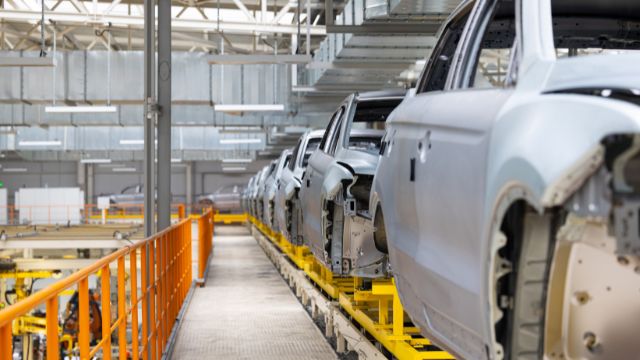The automobile sector is huge in India and comes with many operational challenges. Low-profit margins, high fixed costs, and ever-changing emission norms pose new challenges for India’s automobile sector. Even the people in India seek value-for-money cars with the latest technology. This keeps the automobile sector on its toe across the year. When the GST was implemented, it was clear that it would have advantages and disadvantages for the automobile sector. Today, we have compiled all these details for you and shared how the GST has impacted the automobile sector in India. Check out the details below.
Impact of GST on the Automobile Industry

- Simplified Taxes – This advantage exists in every sector, and it is very evident as well. Before GST, there were many taxes that had a cascading effect on the consumer; however, with the GST, the tax structure was simplified. The manufacturers can avail of the input tax credit, which has benefited everyone.
- Easy Administration – GST has made it easy for accountants, CAs and tax lawyers working in the industry. The administration cost for the companies has been reduced, and even the billing in the automobile sector has been simplified. You don’t have to worry about filing different taxes and having different calculation sheets.
- Consumers – Overall, taxes have been reduced for consumers, which has helped them lower their EMIs. EVs have become more attractive than ever before.
- Dealers – Earlier, dealers were not allowed to claim excise duty and VAT, but today, the input tax credits are available to all.
- Manufacturers – Manufacturers have also been at the beneficial end because of GST. They can also claim tax credits and have a larger capital available.
- SUVs – SUVs have a major market share, and Indians have fallen in love with the new design language. On the contrary, SUVs are also known to cause higher pollution levels. In the 48th GST meeting, the council defined an SUV as any vehicle with an engine capacity of over 1500cc, length over 4000 mm and ground clearance over 170 mm. Here, 22% of the compensation cess will be added.
- Luxury Cars – 28% tax is applicable on luxury cars. There is a separate category for the luxury brands where BMW, Audi, Mercedes, Jaguar, Land Rover, Toyota Land Cruiser and other premium brands are added.
- Mid-Size Cars – Mid-size cars have been made more affordable as the tax rates on these cars have been reduced from 39% to 18%. This makes them the new favourite after the SUVs.
- Small Cars – Hatchbacks have always been in the lowest tax bracket. In the previous taxation policies, small cars were taxed at 28%; however, in the GST regime, the taxation rates have been reduced to 18%. This is a massive drop of 10%.
- Electrical Vehicles – The government is focusing on EVs, and the tax for them is the lowest. Today, the tax rate on EVs is 12%, and before the GST regime, the tax rate was 20.5%. This is a good amount of savings. Moreover, you can also get state and central government subsidies on the purchase of EVs.
Also See: Spinny Business Model: How does Spinny Make Money?
We have summarized the taxation policy in the table given below.
| Category | Fuel | Engine Capacity | Pre-GST Rates | Post GST Rates |
|
< 4000 mm |
Petrol | < 1200 cc | 31.50% | 29% |
| Petrol | > 1200 cc | 44.70% | 43% | |
| Diesel | < 1500 cc | 44.70% | 43% | |
| Diesel | > 1500 cc | 33.25% | 31% | |
| > 4000 mm SUV | Petrol/Diesel | Any Capacity | 55% | 43% |
| >40000 mm non-SUV | Petrol | > 1200 cc | 51.60% | 43% |
| Diesel | > 1500 cc | 51.60% | 43% | |
| Electric Cars | Electric | NA | 20.50% | 12% |
Upcoming Reforms in GST on Automobile Sector
It is well-known that the government is very critical of clean fuel. You might already know about flexi-fuel, where a fuel blend is used. The government is working out a framework where the tax could be reduced from 28% to 5% on flex-fuel vehicles. The advantage of the flex-fuel is that it minimizes the pollution from the vehicle.
In addition, the GST on the cars is quite high. Moreover, many states are banning petrol vehicles over 15 years old and diesel vehicles over ten years old. In such a case, the high GST will lead to an additional burden on the consumer. If the car is being scrapped and a new car is being purchased, then the government should also help the consumer by offering some tax rebate. The present rate of 28% + cess is unsustainable.
Final Take
In many cases, the government offer a subsidy for electric vehicles and hybrid vehicles. Moreover, the tax for such vehicles is also lower. However, we strongly feel that the approach of having GST + Cess is unfair. It defeats the purpose of having GST, and it is unfair on consumers to pay as much as 50% tax on the vehicle purchased. In addition to the GST, the consumer pays road tax, registration tax, and other overheads.














